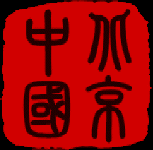 |
YongHeGong Lama Temple |
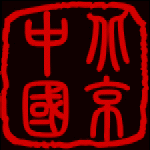 |
 |
YongHeGong Lama Temple |
 |
|
YongHeGong Lama Temple Introduction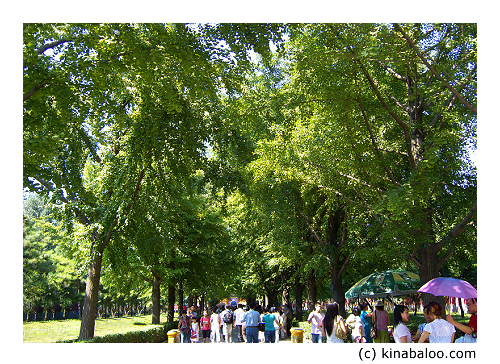
The YongHeGong Lama Temple (YongHe Temple), also known as the 'Palace of Peace and Harmony Lama Temple', is a temple and monastery of the Geluk (Yellow Hat) School of Tibetan Buddhism located in the northeastern central part of Beijing, next to the subway station of the same name. YongHeGong is one of the largest and most important Tibetan Buddhist monasteries in the world. The building and the artworks of YongHeGong combine Han Chinese and Tibetan styles (and some Mongolian motifs). History of YongHeGong Lama Temple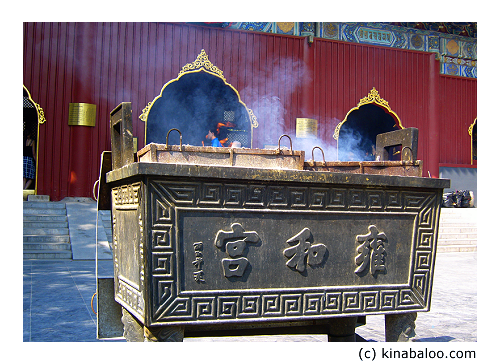
Building work on the YongHeGong Temple started in 1694 during the Qing Dynasty. It originally served as an official residence for court eunuchs. It was then converted into the court of Prince YongZheng (Yin Zhen), a son of emperor KangXi. After YongZheng's ascension to the throne in 1722, half of the building was converted into a lamasery, a monastery for monks of Tibetan Buddhism, while the other half remained an imperial palace. After YongZheng's death in 1735, his coffin was placed in the temple for mourners. YongZheng's successor, emperor QianLong, gave the temple imperial status. This was signified by having its turquoise tiles replaced with the yellow tiles that were reserved for the emperor. Subsequently (1744), the monastery became a lamasery and a residence for large numbers of Tibetan Buddhist monks from Mongolia and Tibet. The YongHeGong Lamasery became the national centre of Lama administration. YongHeGong is said to have survived the Cultural Revolution due to the intervention of prime minister Zhou Enlai. YongHeGong was opened to the public in 1981. Location of YongHeGong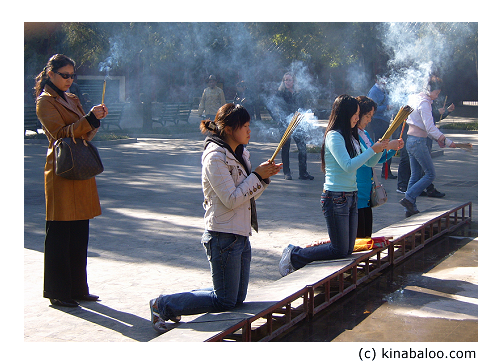
YongHeGong Lama Temple is located just inside the north eastern corner of the second ring road. There is a subway train station here with the same name. On exiting the subway, walk south alongside the temple for about 500m until you reach the entrance of YongHeGong on the lefthand side. The Confucious Temple is close by, so you can consider visiting there afterwards. It has a different style and feel to YongHeGong. The White Clouds Taoist Temple, just outside southwestern central Beijing, offers yet another different style. YongHeGong Layout, Architecture and Artworks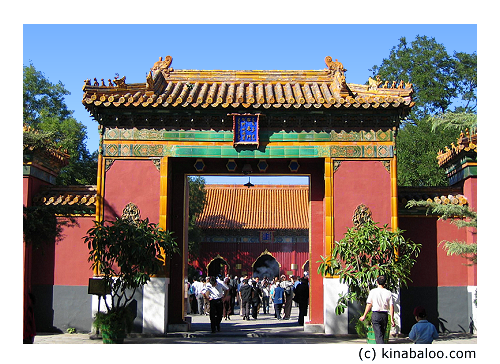
YongHeGong Lama Temple is arranged along a north-south central axis, which has a length of 480m. The main gate is at the southern end of this axis. Along the central axis of YongHeGong there are five main halls that are separated by courtyards: the Hall of Heavenly Kings (Tian Wang Dian or Devaraja Hall), the Hall of Harmony and Peace (YongHeGong), the Hall of Everlasting Protection (YongYouDian), the Hall of the Wheel of the Law (FalunDian), and the Pavilion of Ten Thousand Happinesses (WanFuGe). In the first court of YongHeGong there is a glazed-tile arch, Gate of Peace Declaration (ZhaoTaiMen), patterned with decorative dragons and flowers. Walking through the grand glazed-tile arch you will reach a three arch gate - the Gate of Peace. The central passageway was only for emperors. In the second court, on each side of the Gate of Peace, stand a Bell Tower and Drum Tower. Two pavilions stand symmetrically opposite to the north. Inscriptions in Chinese, Manchu, Mongolian and Tibetan are engraved on slates to record the temple's history. 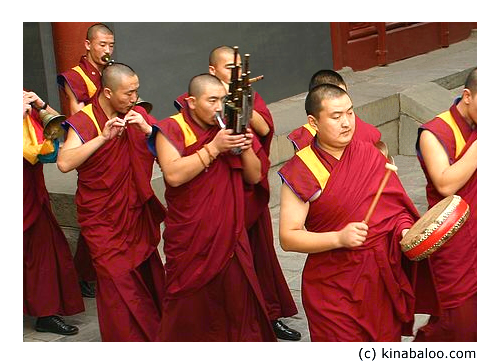
The Hall of the Heavenly Kings (Devaraja Hall or TianWangDian) in YongHeGong, the southernmost hall, served originally as the main entrance to the monastery. In the center of the hall stands a smiling statue of the Maitreya Buddha with a sandalwood pagoda on each side. On each pagoda stand many small Buddhist images, which symbolize longevity. Along the walls, fearsome statues of the four Heavenly Kings (or 'Celestial Guardians') are arranged. Behind the shrine to Maitreya sits the statue of WeiTuo, facing backwards to a large courtyard. A marble-based bronze incense burner stands on the way to the Hall of Harmony and Peace in YongHeGong. It stands 4.2 meters high with a decoration of two dragons playing with a pearl above its six openings. 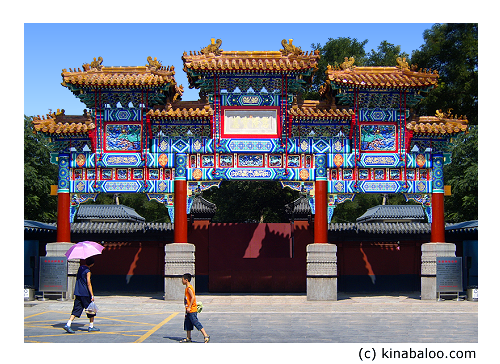
After the large incense burner, is a Mount Sumeru, a bronze sculpture of the Ming Dynasty that symbolizes the center of the world. On the top lies the legendary paradise where Sakyamuni and men of moral integrity live after death; the dwellings of humans lie in the middle, and devils abide in Hell below. The Hall of Harmony and Peace (Mahavira Hall or DaXiongBaoDian) is the main building of YongHeGong. Mahavira is an honorable title of Sakyamuni. It houses three bronze statues of the Buddhas of the Three Ages. A statue of Gautama Buddha (Buddha of the Present, also called Sakyamuni) is in the center, flanked by a statue of Kasyapa Matanga (Buddha of the Past, right) and Maitreya Buddha (Buddha of the Future, left). Along the sides of the hall, statues of the 18 Arhats are placed. The 18 Arhats were said to be the disciples of Samkyamuni who helped to diffuse Buddhism. A painting on the western wall is a Bodhisattva. A mural in the hall shows the Bodhisattva Avalokitesvara. 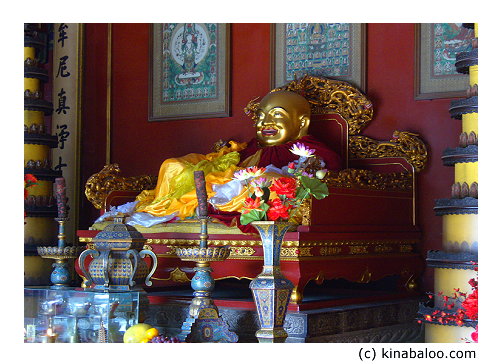
The Hall of Everlasting Protection (YongYouDian) in YongHeGong was Emperor YongZheng's living quarters as a prince and the place where his coffin was placed after his death. Today, a statue of the Bhaisajya Guru (healing Buddha) stands in this hall. The Hall of the Wheel of the Law (FalunDian) in YongHeGong, with 5 gilded pagodas, functions as a place for reading scriptures and conducting religious ceremonies. It contains a large, 6m high, gilded bronze statue of Tsong Khapa, founder of the Geluk (Yellow Hat) School of Buddhism, on a lotus. The hall also contains a Five Hundred Arhat Hill, a carving made of red sandalwood with statues of the arhats made from five different metals - gold, silver, copper, iron and tin. The Pavilion of Ten Thousand Happinesses in YongHeGong contains an amazingly tall (18m) statue of the Maitreya Buddha carved from a single piece of White Sandalwood. This statue is one of three artworks in the temple that were included into the Guinness Book of Records in 1993. Today, there are about 70 lamas living in YongHeGong. For a small donation, you can ask the lamas to bless things for you - something like a jade pendant. Videos of YongHeGong Lama Temple |
Share this page
|
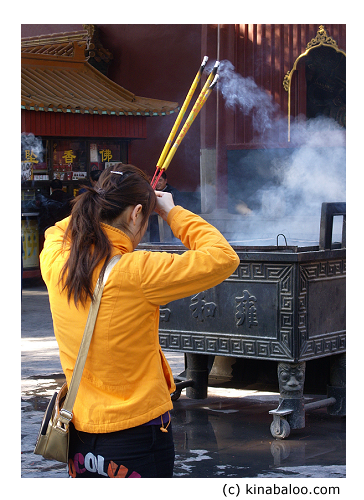
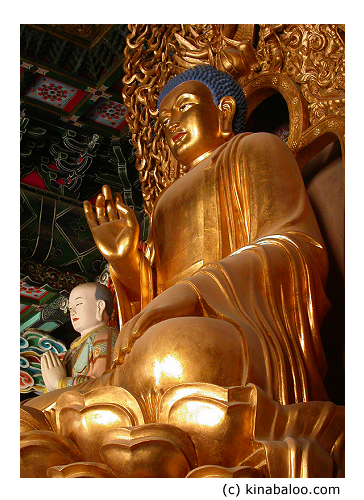
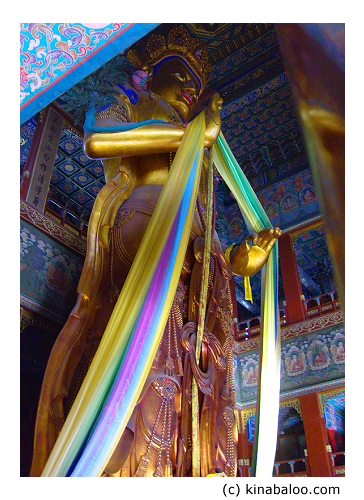
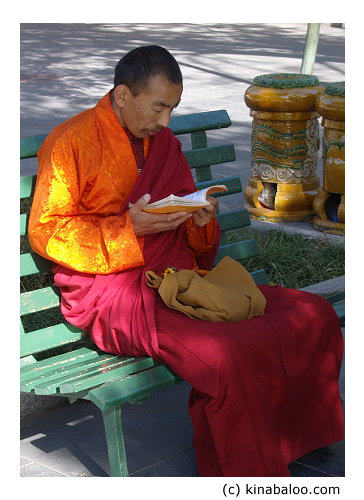
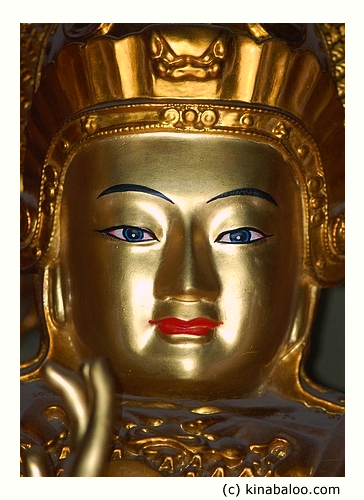
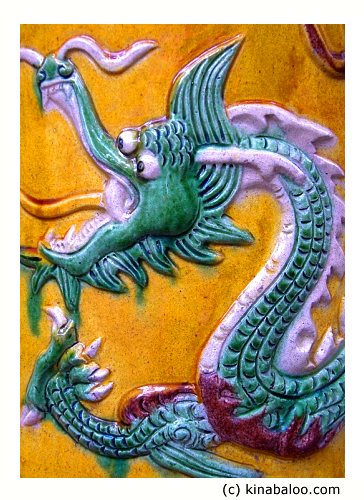
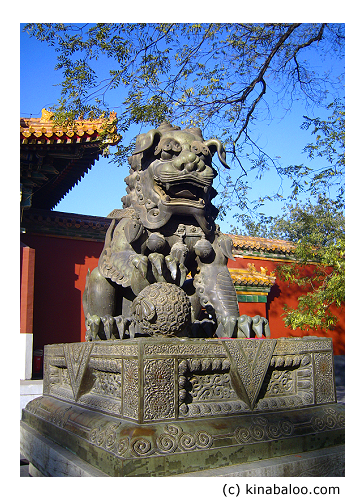
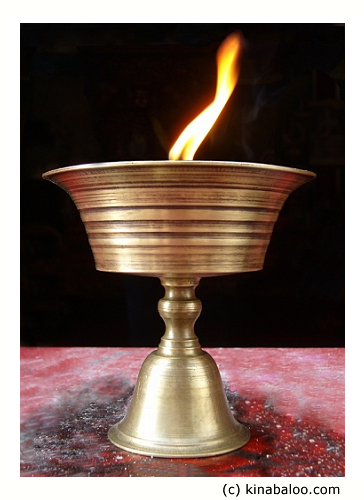
China Travel and Culture Videos Home